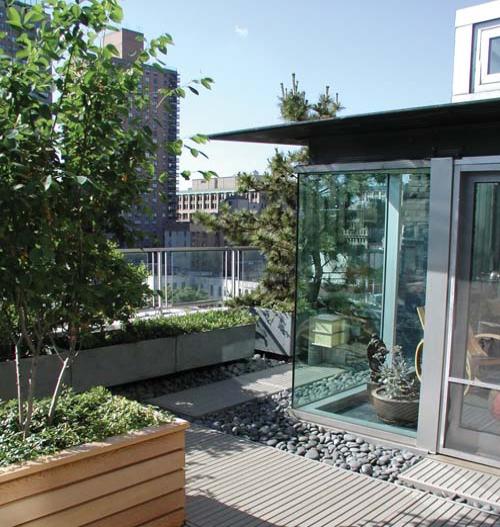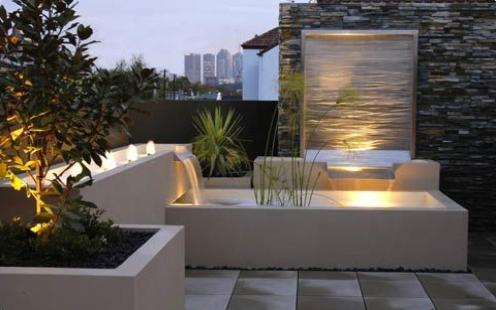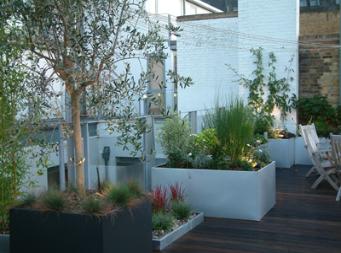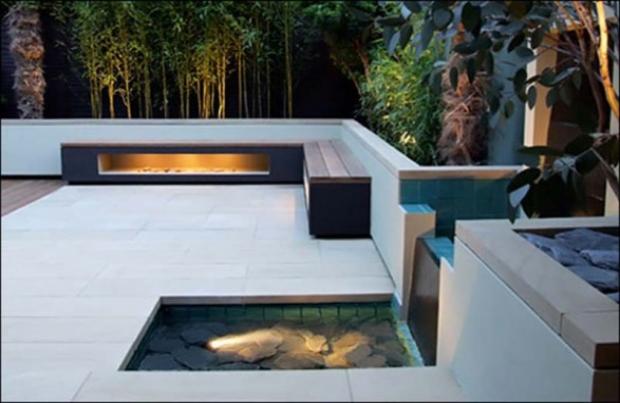For those living in urban high-rise apartments and modern architecture homes, a rooftop terrace garden is a seamless way to incorporate natural elements into a modern designed building by inverting the idea of traditional modern landscape.
Rather than creating a modern landscape design, in which man made materials like concrete and metal are integrated into existing exterior landscapes, modern terrace gardens bring the softness and lush colors of naturally occurring materials and plants into a stationary, modern-designed space. These finished exterior spaces offer wonderfully unique perspectives of any city by re-contextualizing urban-situated residences.

To pull the contemporary feel of a modern interior outdoors, minimalist vegetation is a simple landscape design technique that both suits and compliments any urban environment or modern architecture building. Many modern terrace gardens showcase only green-colored shrubbery, creating a clean and appealing contrast between touches of like vegetation and an urban backdrop. Oftentimes, native plants – those that are well adapted to a specific region’s climate and soil – are featured in modern rooftop gardens for their low-maintenance requirements.

Landscape architects that are especially environmentally conscious will incorporate water catchers that recycle rainwater into a design so as to create a more efficiency-driven rooftop garden. Both are appropriate choices for those who reside in efficiency driven modern homes and live busy modern lifestyles.

Different combinations of shrubbery, natural stones, and wood create sense-provoking responses to the variety of textures and round or linear shapes. Spacious rooftops can accommodate multiple-level terrace gardens, further pushing the boundaries of modern landscaping by creating new dimensions into which natural elements are placed. For any modern outdoor garden, floor paneling, plant trellises, and outdoor furniture are areas in which natural elements can be further incorporated into a terrace garden.

Rich hardwood floors, teeming garden boxes, and simple stone waterfalls leave a viewer simultaneously aware of the garden’s urban location and captivated by the natural elements imposed on the modern scenery. Smart exterior designs will direct a viewer’s attention to specific sites in the surrounding cityscape by trategically placing features like lighting and vegetation.

